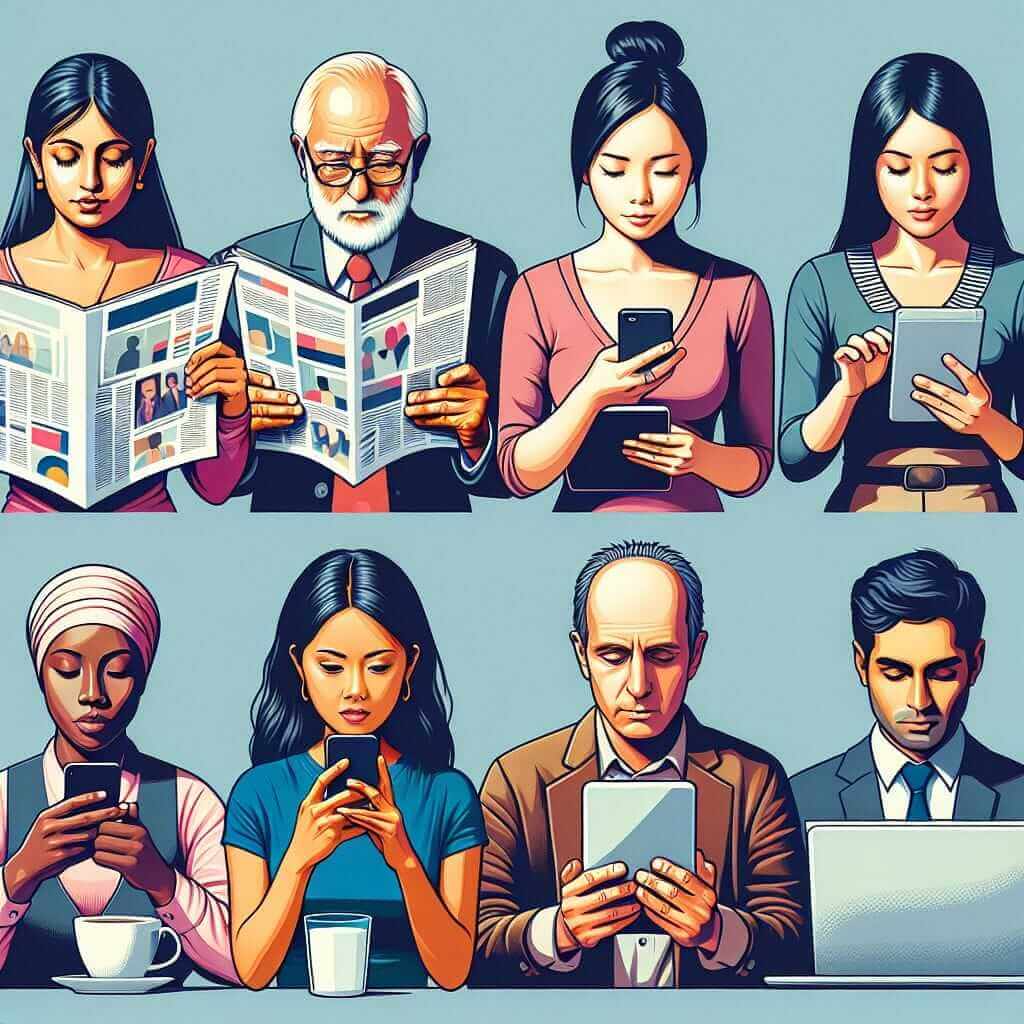The relationship between media representation and social attitudes has been a topic of significant interest and debate. This subject frequently appears in IELTS Writing Task 2 due to its broad implications and relevance to contemporary society. According to various IELTS sources, questions regarding the influence of media on public opinion and societal norms are common. This article will explore this topic in depth, offering a thorough analysis and a sample essay to aid IELTS candidates.
Here are three potential essay prompts related to this topic:
- “Media representation significantly influences individuals’ perceptions of reality. To what extent do you agree or disagree?”
- “Discuss the effects of media portrayal on societal norms and attitudes. Provide reasons for your answer and include relevant examples.”
- “Some people believe that the media has too much influence on public opinion. Do you agree or disagree? Justify your answer with specific reasons and examples.”
Essay Prompt:
“Media representation significantly influences individuals’ perceptions of reality. To what extent do you agree or disagree?”
Analyzing the Prompt
This essay prompt requires you to discuss the extent to which you believe media representation affects individuals’ perceptions of reality. The task involves presenting an argument, supported by reasons and examples, for or against the notion of media influencing reality perception.
Sample Essay
Introduction
The omnipresence of media in contemporary society has led to a growing concern about its influence on individuals’ perceptions of reality. Media representation, encompassing various forms like television, social media, and print publications, has the power to shape public opinion and societal norms. I strongly agree that media representation significantly influences individuals’ perceptions of reality due to its pervasive nature and the psychological effects it can induce.
Body Paragraph 1
Firstly, the pervasive nature of media ensures that individuals are constantly bombarded with information, images, and narratives that shape their worldview. Studies have shown that repeated exposure to certain media portrayals can normalize particular behaviors and attitudes. For example, the portrayal of gender roles in advertising often reinforces traditional stereotypes, influencing audiences’ understanding of gender norms.
Body Paragraph 2
Furthermore, media representation often serves as a primary source of information, especially in the digital age where social media platforms dominate. The phenomenon of ‘filter bubbles’ and algorithm-driven content curation means that individuals are increasingly exposed to information that reinforces their existing beliefs and prejudices. This reinforcement effect can lead individuals to develop a distorted perception of reality that aligns with the perspectives perpetuated by their preferred media sources.
Body Paragraph 3
Moreover, psychological effects such as desensitization and the cultivation theory highlight the media’s influence on individual perceptions. Desensitization to violence through repeated exposure in movies and television shows can lead to a diminished response to real-world violence. Likewise, cultivation theory posits that long-term exposure to media content can shape an individual’s reality perception, leading them to adopt beliefs that mirror the media’s portrayal of the world.
Conclusion
In conclusion, media representation plays a crucial role in shaping individuals’ perceptions of reality. Its pervasive nature, combined with psychological effects and the reliance on media as a primary information source, demonstrates the powerful influence media can exert. As such, it is essential for media consumers to develop critical thinking skills to navigate the information landscape effectively. (303 words)
 Impact of media on society
Impact of media on society
Key Considerations When Writing
- Vocabulary and Grammar: Use advanced vocabulary and complex sentence structures. Ensure you utilize a variety of sentence types, including compound and complex sentences to create a sophisticated essay.
- Coherence and Cohesion: Ensure each paragraph transitions smoothly to the next. Use cohesive devices such as connectors to create a smooth flow.
- Task Response: Make sure to address all parts of the question and provide a balanced argument supported by relevant examples and evidence.
Difficult Vocabulary
- Omnipresence (n) /ˌɒmnɪˈprezəns/: The state of being widespread or constantly encountered.
- Pervasive (adj) /pəˈveɪsɪv/: Spreading widely throughout an area or group of people.
- Desensitization (n) /diːˌsɛnsɪtəˈzeɪʃən/: The diminished emotional responsiveness to a negative stimulus after repeated exposure.
- Cultivation Theory (n) /ˌkʌltɪˈveɪʃən ˈθɪəri/: The theory that long-term exposure to media content can shape an individual’s perceptions of reality.
- Algorithm-driven (adj): Operated or controlled by a set of rules or procedures for solving a problem in a finite number of steps.
Conclusion
The influence of media representation on social attitudes is a multifaceted issue that is likely to appear in various forms in IELTS Writing Task 2. By understanding the depth and breadth of this topic, and practicing with similar prompts, candidates can better prepare for their exams. Other related prompts to consider practicing on include:
- “Evaluate the effectiveness of media campaigns in shaping public opinion on health issues.”
- “Analyze the role of media in influencing political views and electoral outcomes.”
The overarching goal is to develop a sophisticated understanding and analysis of media’s role in society, which is essential for achieving a high band score in IELTS Writing Task 2.


